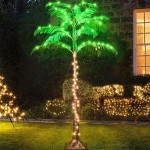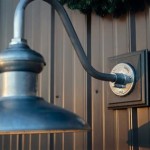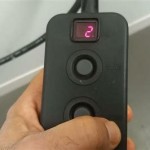Can You Use LED Strip Lights Outdoor?
LED strip lights have become increasingly popular for both indoor and outdoor use. They are versatile, energy-efficient, and can be used to create a variety of lighting effects. However, before using LED strip lights outdoors, it is important to consider a few key factors to ensure they are suitable for your application. In this article, we will explore the essential aspects of using LED strip lights outdoors, including IP ratings, weather resistance, and temperature considerations.
IP Ratings
IP ratings, or Ingress Protection ratings, indicate the level of protection that a device has against the ingress of solid objects and liquids. The IP rating is typically composed of two numbers. The first number indicates the protection against solid objects, such as dust and dirt, while the second number indicates the protection against liquids, such as water. For outdoor use, it is important to choose LED strip lights with an appropriate IP rating to ensure they can withstand the elements.
For example, an IP65 rating indicates that the LED strip lights are protected against dust and water jets from any direction. This rating is suitable for use in most outdoor applications, such as patios, decks, and gardens. For more extreme conditions, such as heavy rain or submersion in water, you may need to choose LED strip lights with a higher IP rating, such as IP67 or IP68.
Weather Resistance
In addition to IP ratings, it is also important to consider the overall weather resistance of the LED strip lights. This includes their ability to withstand extreme temperatures, UV radiation, and other environmental factors. Choose LED strip lights that are specifically designed for outdoor use and have been tested to withstand the harsh conditions of your climate.
Look for LED strip lights that are made from durable materials, such as silicone or PVC, which can withstand exposure to the elements. Ensure the lights have a protective coating to prevent damage from UV radiation and other environmental factors. Consider using LED strip lights with a weatherproof adhesive backing or mounting brackets to secure them securely and prevent water ingress.
Temperature Considerations
The operating temperature range of LED strip lights is another important factor to consider. LED strip lights can generate heat when operating, so it is essential to choose lights that are designed to operate within the temperature range of your outdoor environment.
Extreme temperatures can affect the performance and lifespan of LED strip lights. If the lights are not designed to withstand the temperature range, they may overheat, flicker, or fail prematurely. Check the specifications of the LED strip lights to ensure they are suitable for the minimum and maximum temperatures in your climate.
Conclusion
By considering the IP ratings, weather resistance, and temperature considerations, you can choose LED strip lights that are suitable for outdoor use and will provide long-lasting performance in your specific climate. With proper installation and maintenance, LED strip lights can add beauty, functionality, and energy efficiency to your outdoor space.

The Complete Guide To Outdoor Led Strip Lights Lighting Access

Color Changing Waterproof Strip Lights For Outdoor Landscape Lighting

120v Led Light Strips Long Run For Indoors And Out Ledsupply Blog

The Complete Guide To Outdoor Led Strip Lights Lighting Access

How To Choose And Install Led Garden Lights

Color Changing Waterproof Strip Lights For Outdoor Landscape Lighting

Do Led Strips Attract Spiders Grid Sub

What Is The Difference Between Rope Lights And Led Strip

Color Changing Waterproof Strip Lights For Outdoor Landscape Lighting

Outdoor Led Light Strips For Permanent Lights Projects Stories Smartthings Community
Related Posts







